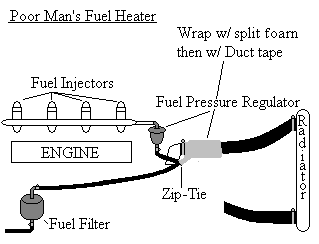How to make a Poor Man's Fuel Heater
Build and install your very own Fuel Heater, like I did! In my search for ways to save gas, money, and our environment, I found this simple yet inexpensive way to do all three! Since heated fuel vaporizes quicker, it burns more thoroughly when mixed with cooler-denser air. This increases fuel efficiency and reduces wasteful emissions. Of course, one cannot overlook the added benefits of extra power and a boost in miles per gallon...
|
Things You'll Need:
* 3-4 feet/.914-1.219 meters of fuel line * 2 Fuel line hose clamps * flat head screw driver or nut driver * pocket knife * Shop Rags * 2 Zip-Ties * Split foam insulation * Gorilla Tape * Cost of Fuel line & clamps is about $6.50 US |
#ad |
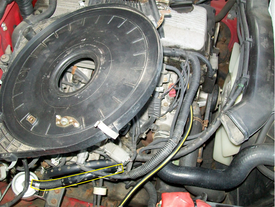
1. Replace the neoprene fuel line from the firewall forward, if your fuel filter is inline. This particular fuel line pre-heater went on a fuel injected pick-up truck. And yes, this also makes for a decent diesel fuel heater as well. This simple modification should increase fuel economy by at least 1-3+ MPG, under normal operating conditions! 2. Answer any questions about the fuel line diameter or length needed, now. Before you take anything apart, do your shopping! Having trouble determining the line diameter? Just compare it to the fuel filter specified for your vehicle/engine size, at the auto parts store. 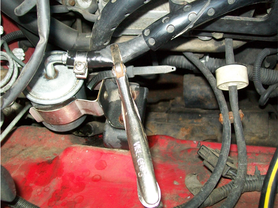
3. Release the fuel system pressure, by removing/replacing the gas cap at the tank. Some vehicles have a Schrader type pressure-relief valve on the injector rail. If yours has one, cover it with a shop rag and depress the pin slowly by using the blade of a screw driver. Avoid soaking the fender with fuel by using vise grips to clamp the neoprene line, before removal.
** SEE WARNINGS! ** 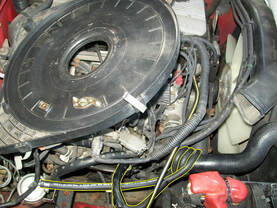
4. Perform a 'dry fit,' by laying out the fuel line as illustrated and cutting it to length. Eliminate any sharp bends in the line and watch for things it could rub against (see the Tips section, below). Wrap the radiator hose 3x and secure the fuel line with a zip-tie. Attach both ends, to the fuel filter & steel line leading to the injector rail where the original line connected.
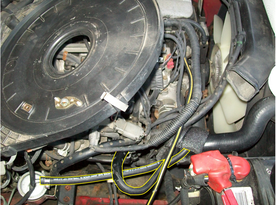
5. Using split-foam pipe insulation, cut lengthwise, cover the fuel line wraps. Secure it in place with a zip tie. Insulation improves heat transfer from engine coolant to fuel.
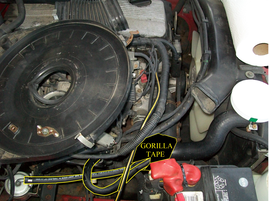
6. Wrap the split-foam insulation with Gorilla tape, to secure the heater in place and prevent movement. Movement and vibration can lead to chaffing and eventually cause a leak in any hose, be it fuel, vacuum, coolant or brake line or power steering hose.
7. Clear out all excess materials & tools from the engine compartment, start your engine and check for fuel leaks at the clamps. Double-check to be sure the fuel line does not rub against anything. Adjust or add zip ties as needed. You're done!
Tips
* If you are working in a tight spot, route your line so that it doesn't contact a bracket or sharp edges. * You can cut a small section of left-over line, split it lengthwise, slide it over the edge or line at the contact point and zip-tie it in place. Check this periodically, to be sure it isn't rubbing through. If it is, replace it. * Before performing this modification, you might consider the benefits of a complete tune-up. See my related article link below *This modification will not void your Warranty. * This same thing can be done using steel line, but it is much more difficult to work with! * It is better to buy too much fuel line than not enough. * This modification works just as well on internal-combustion engine of all types & purposes. Warnings * NO SMOKING! * Route your fuel line away from sharp edges, moving parts and exhaust manifolds. * It is always a good idea to wear chemical resistant gloves and eye protection when working with fuels and solvents. * While steel line may transfer more heat, it could leak fuel at poor-fitting connections. Flexible fuel line puts less strain on connections. * If you live in an exceedingly hot climate, preheating the fuel may cause "vapor lock," especially on old, carbureted vehicles. This may only be a wintertime solution, for you. But the fuel savings will outweigh the cost and effort required! How to Tune-Up a Car Yourself Copyright 12/12/2008 All Rights Reserved. Questions? Comments? Contact Me More related articles: Automotive #ad |
|
